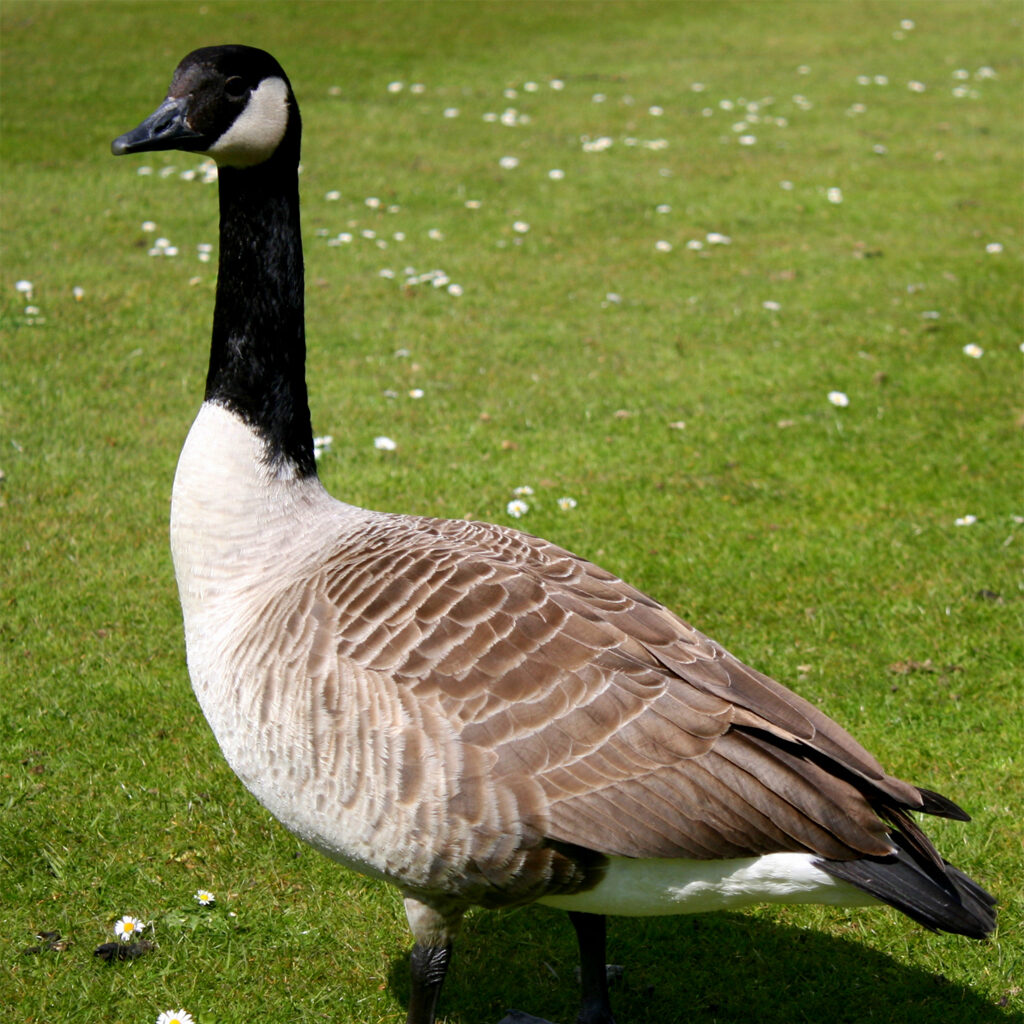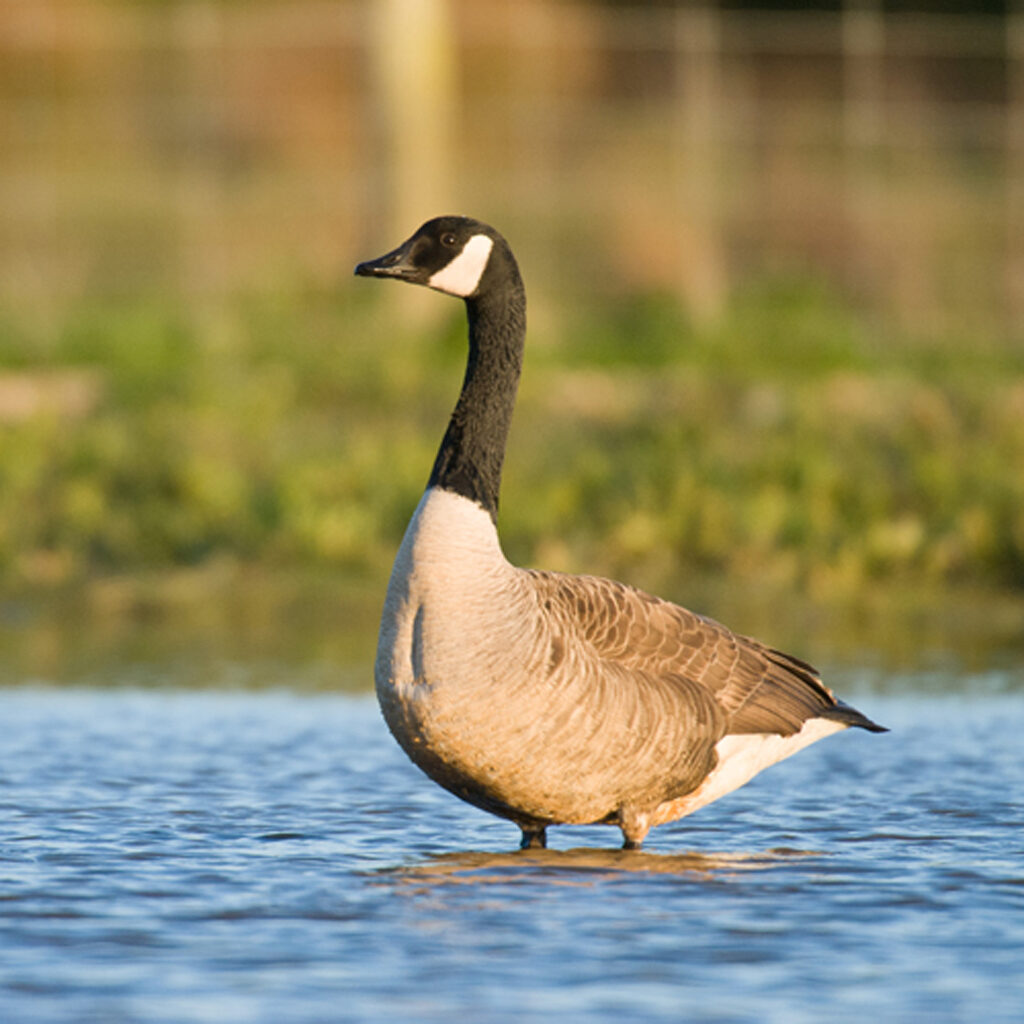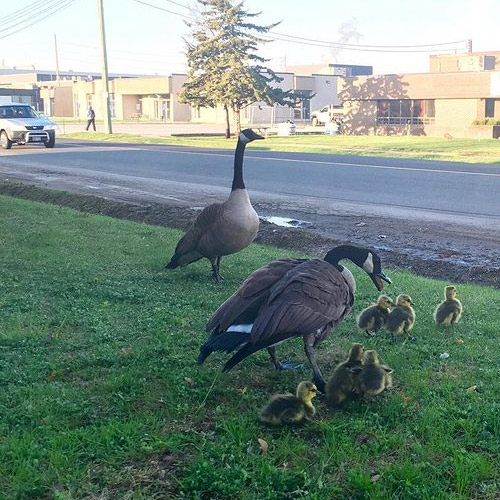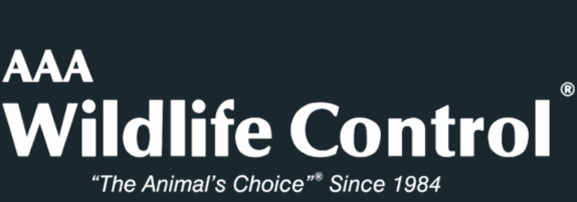Home / Wildlife Control Services in Vancouver / Geese Faqs
Geese FAQs
Do I need a permit to remove Canadian Geese?
Yes, in Canada, it is illegal to touch the nest, harm the eggs or capture Canadian geese without a permit or authorization from the Canadian Wildlife Service or provincial/territorial wildlife authorities. There are strict regulations in place to protect Canadian geese and other wildlife species, and violating these regulations can result in fines or other penalties. In some cases, permits may be granted for the removal of geese if they are causing damage or posing a threat to public safety, but these permits will typically come with specific conditions and restrictions. It is important to consult with local authorities before attempting to remove Canadian geese to ensure that you are in compliance with all relevant laws and regulations.
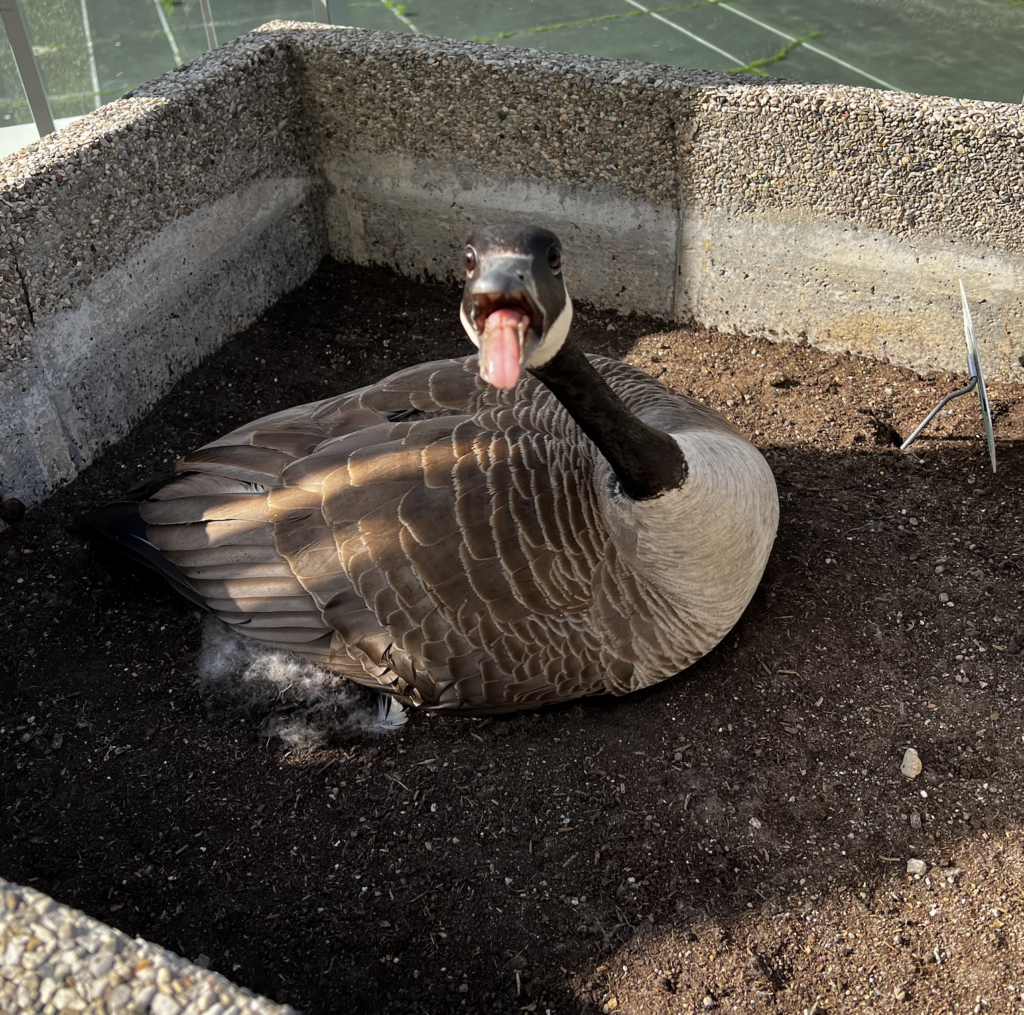
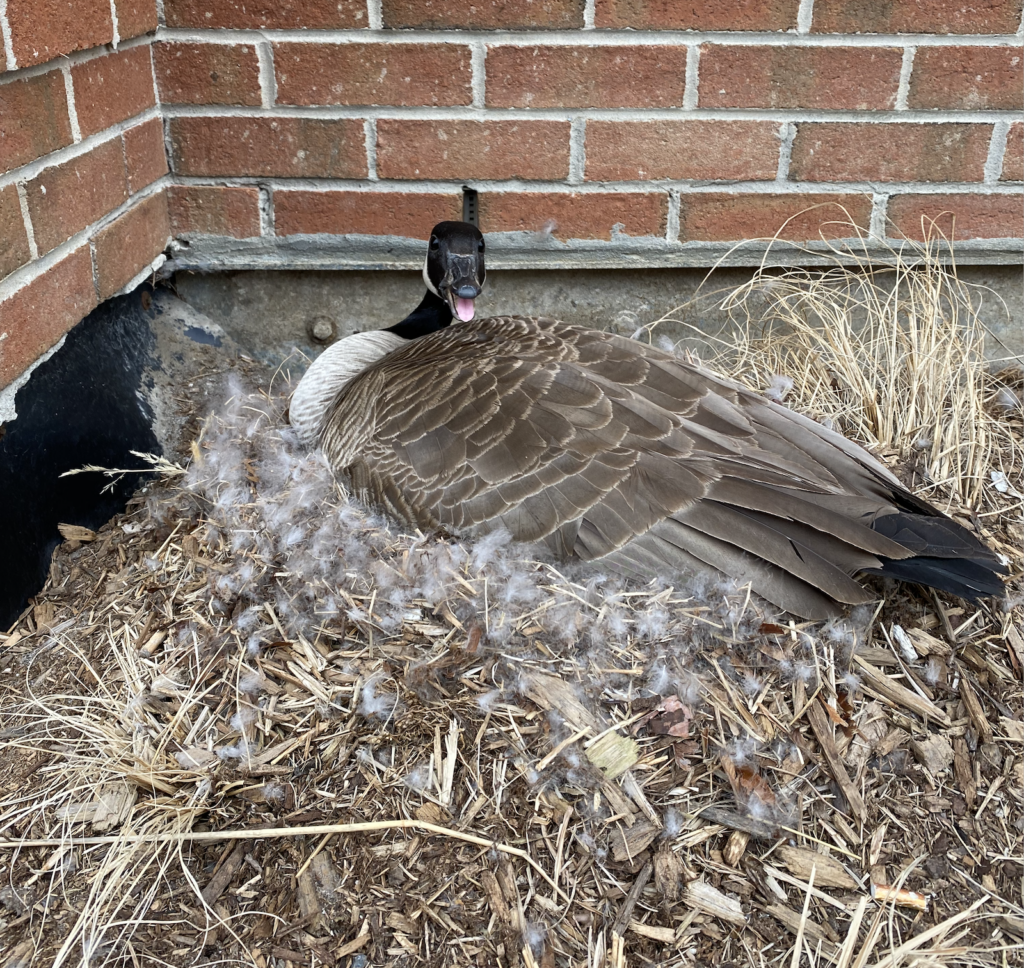
Should I approach a Canada Goose?
It is not advisable to approach a Canadian goose, especially during their breeding season (spring and summer), as they can become aggressive and territorial. Canadian geese are protective of their nests and offspring, and may attack humans who they perceive as a threat. If you encounter a Canadian goose, it is best to give them plenty of space and avoid making any sudden movements or loud noises. Do not attempt to feed them or touch them, as this can cause them to become habituated to humans and disrupt their natural behaviour. It is always important to respect wildlife and observe them from a safe distance.
What should I do if a Canada Goose is nesting outside my building?
If a Canada goose is nesting outside your building, it is best to give the bird plenty of space and avoid approaching it. Call Gates Wildlife Control to discuss your options and the next steps to legally solve this problem.
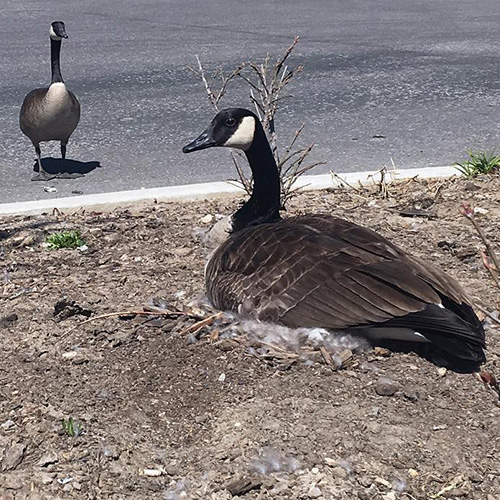
Morphology and Lifestyle
Physiology: The Canada Goose is well known due to their distinctive black head, white cheeks, long black neck and webbed feet.
Body Size: 30 to 43 inches
Wing Span: Average wingspan is 4.2 to 5.6 feet. Their size is relative to a 6ft man.
Weight: Average weight varies between the subspecies, from 1.1kg for the cackling Canada Goose to 8kg for the Giant Canada Goose
Migration: Canada geese normally migrate to southern agricultural areas for the winter. To do so, they fly in the distinct “V” pattern, where one goose is the leader and its flock follows behind in a v-shape. This helps the geese save energy when they migrate, benefit from the air currents passing the leader, permitting them to fly longer distances. The v-shape also allows for an easier coordination of the flock’s movements, such as a change in flight speed or direction. The formation lets these changes be communicated quickly and efficiently to all geese in the flock. Some may decide to not migrate and stay in colder climates if food is available.
Call: Adult Canada Geese have about 13 different calls, ranging from low clucks and murmurs communicated while feeding and loud greeting and alarm calls. Goslings even start to communicate with their parents while they’re still in the egg. A gosling can make a call, or peep, if it’s distressed or content.
Lifespan: Canada Geese live around 10-25 years on average in the wild although some may live to be as old as 30 years old.
39 Years Of Wildlife Removal Experience
At Gates Wildlife Control, we offer professional and effective animal removal and prevention solutions to keep raccoons, squirrels, and skunks from entering your home. We also provide effective rodent control services for mice and rat infestations. Our team is trained and experienced in the installation of one-way doors, which allow the animals to exit your attic or walls, but prevent them from returning. Contact us today for a free consultation and quote,to keep these animals out of your home for good.
Raccoons, squirrels, and skunks are common animals that can cause damage and create nuisances when they move into your attic or walls. They can chew on wires, damage insulation, leave droppings and debris, and even carry diseases and parasites.
One-way doors are a humane and effective way to remove these animals from your home and prevent them from returning. The doors are installed over the entry points the animals are using to access your attic or walls. Once the animals leave to forage for food, they are unable to re-enter the space through the one-way door.
At Gates Wildlife Control, we have the knowledge and equipment to effectively install one-way doors for raccoons, squirrels, and skunks. Our team will also assess your home and identify any potential entry points that need to be sealed off to prevent future intrusions.
In addition to installing one-way doors, we also offer repair services for damage caused by the animals and provide screening of potential entry points. This includes fixing holes in the roof or walls to prevent water from coming into the roof and walls and installing screens over roof vents, soffits and chimneys.
Don’t let raccoons, squirrels, or skunks take over your attic or walls. Contact Gates Wildlife Control today for a free consultation and quote, and keep these pests out of your home for good with our one-way door installation services.
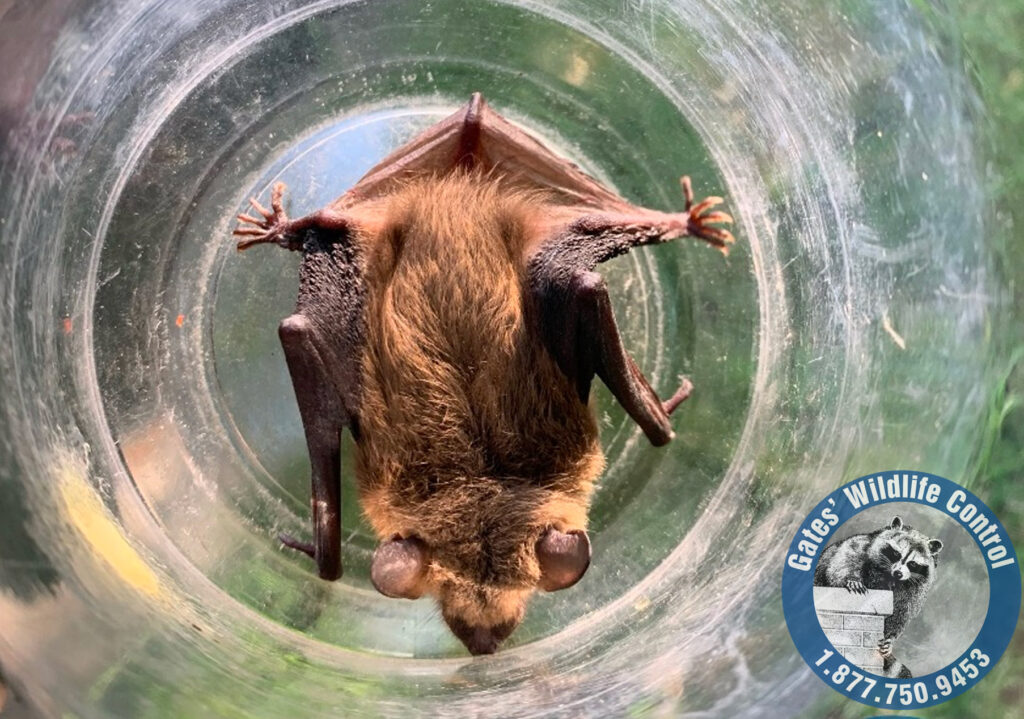
Morphology and Lifestyle
- Wing span: Big Brown Bats – 32 to 39cm; Little Brown Bats – 22 to 27cm.
- Weight: Big Brown Bats – 11 to 25g; Little Brown Bats – 5 to 11g.
- Vocalization: Bats use high frequency echo-location that is hard to hear with the exception of some clicking sounds.
- Lifespan: Between 10 and 20 years with the rare bat living as long as 30 years.
Did You Know?
- Bat fact: Bats play an important role in our environment as they can consume up to 3,000 insects in one night.
- Bat fact: Bats in Canada will not fly in your hair and suck your blood.
- Bat fact: Bats can spread the rabies virus when infected with very little to no evidence of contact.
- Bat fact: Bats can squeeze through a hole the size of a dime.
- Bat fact: A bat can produce several times its own weight in waste each month.
- Bat fact: Bat colonies can range in size from one to several hundred and can double in size every year.
- Bat fact: Bats hibernate when the temperature drops below 10 degrees C.
More About Geese

Humane Raccoon Removal

Humane Skunk Removal

Humane Squirrel Removal
Do It Yourself Dangers
For those who may be tempted to take on the task of removing animals and animal proofing themselves, it is important to remember that it can be a dangerous undertaking. Falling off ladders and roofs while attempting to remove animals or seal entry points can result in serious bodily harm. In some cases, even aggressive animals can pose a danger to those trying to remove them. It is best to leave these tasks to experienced professionals who have the knowledge and equipment to safely and effectively handle wildlife removal and animal proofing. Attempting to do it yourself can put you at risk of injury and potentially even more damage to your home.


















